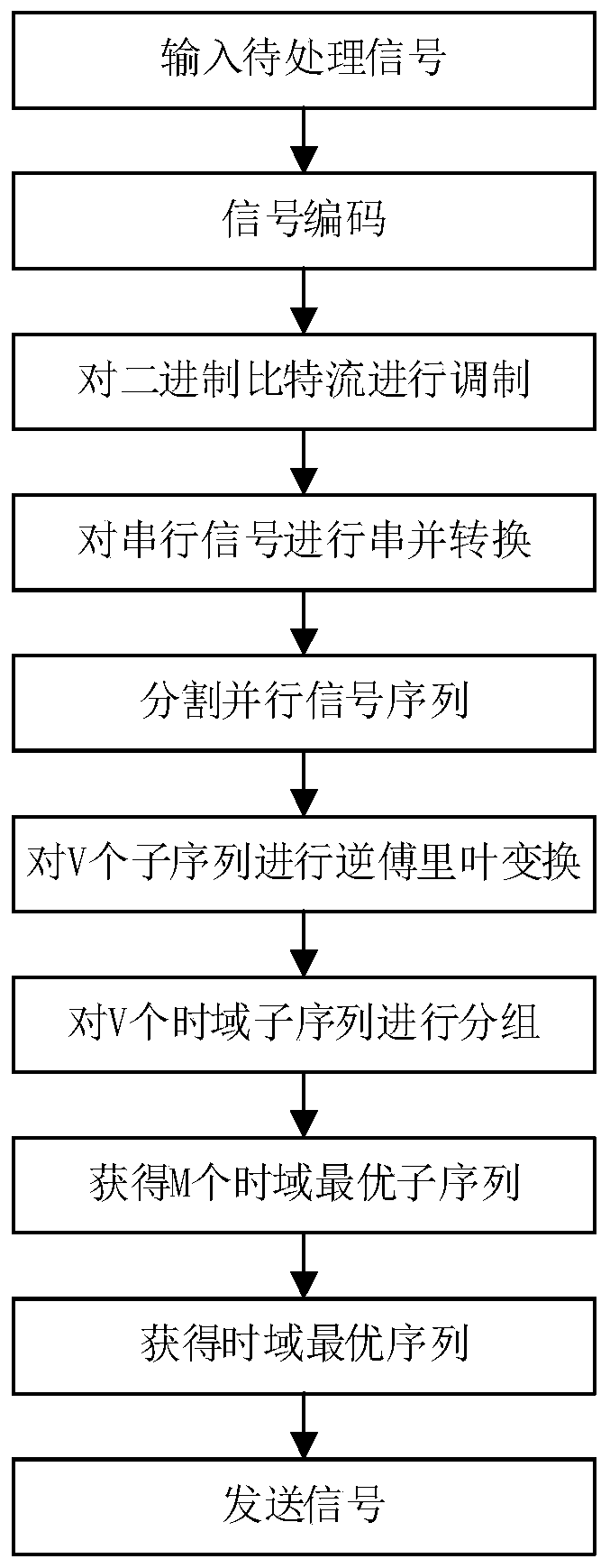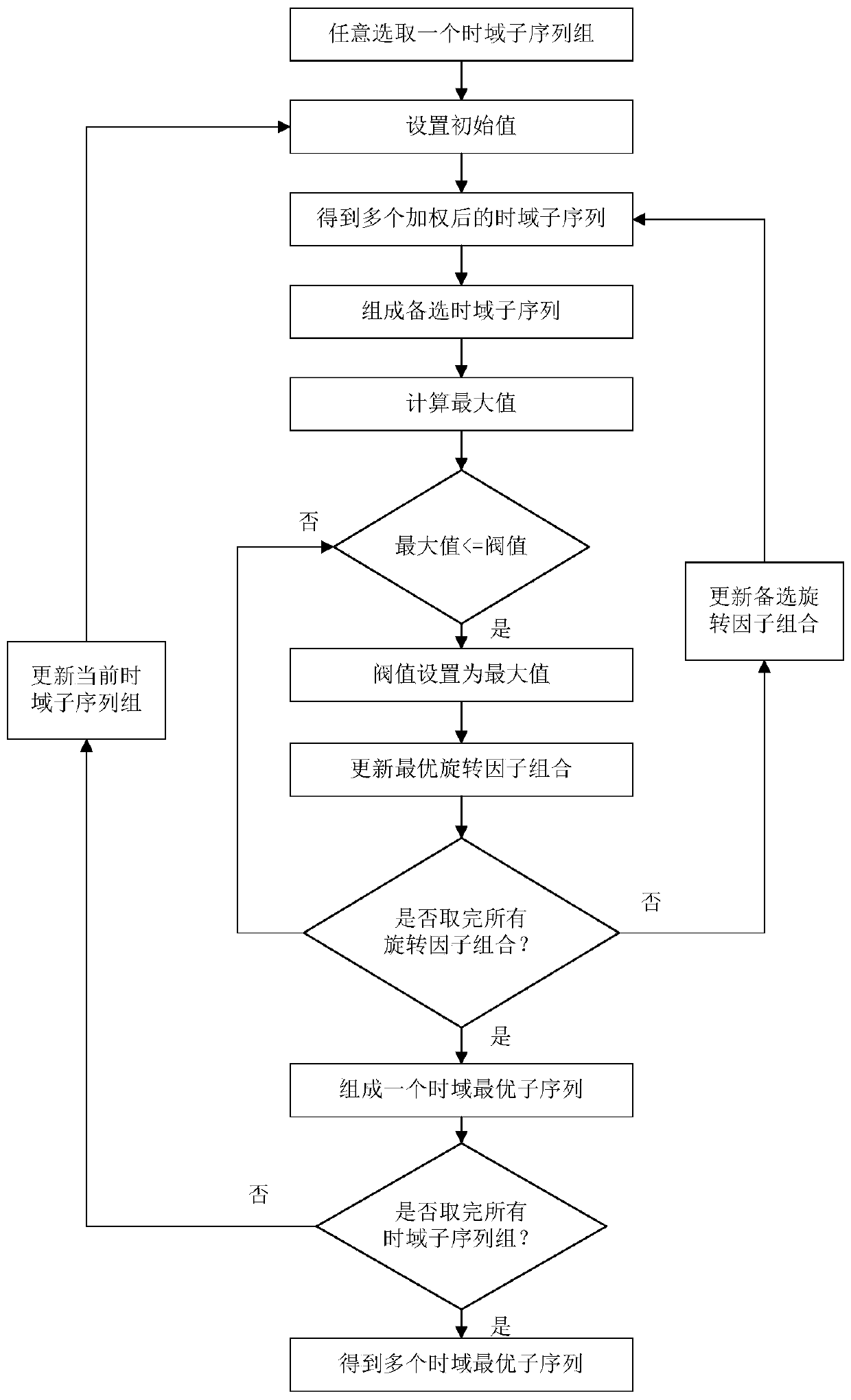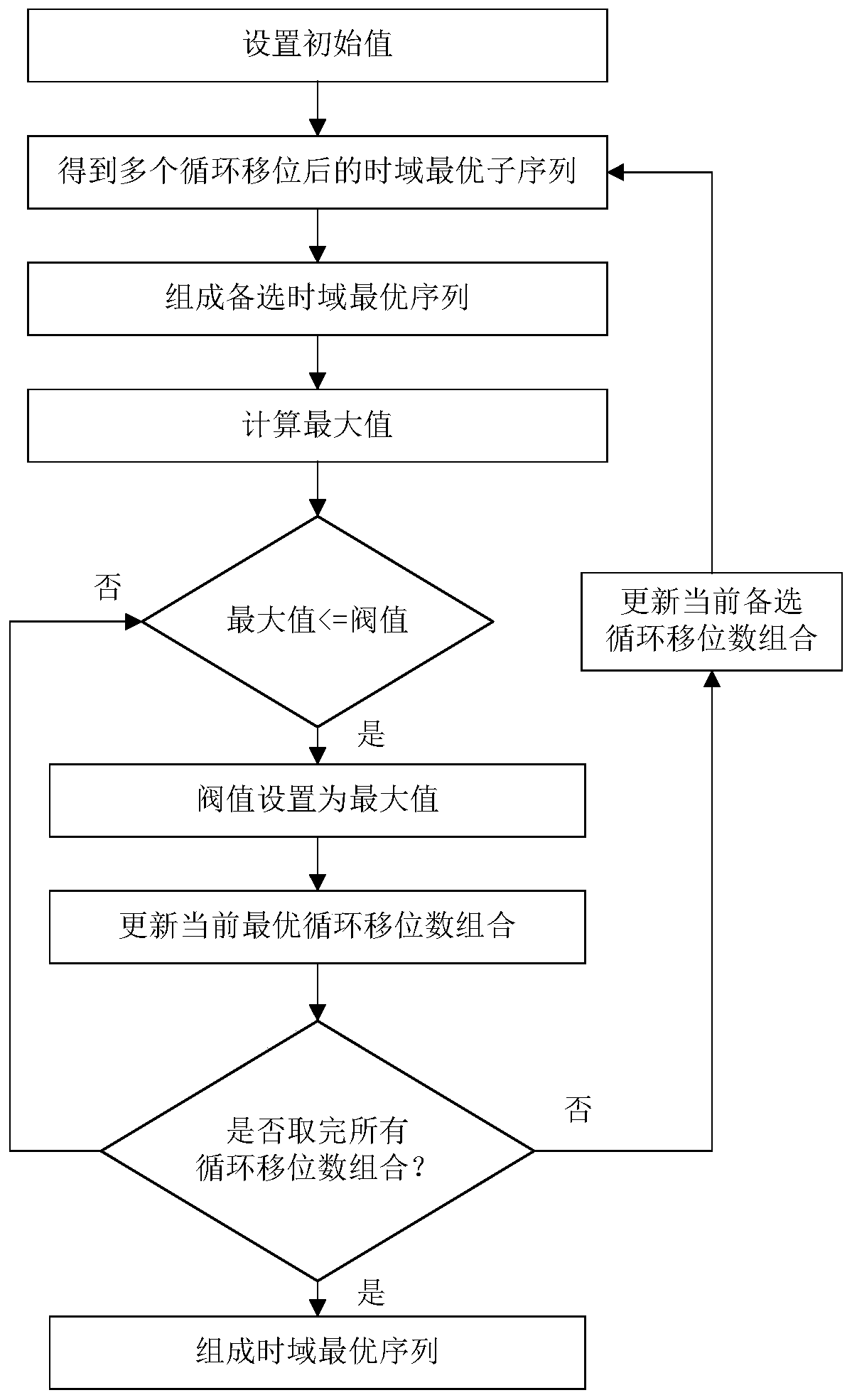The method of reducing peak-to-average ratio based on pts algorithm in ofdm system
A peak-to-average ratio and algorithm technology, which is applied in the field of reducing the peak-to-average power ratio of signals based on the partial sequence transmission PTS algorithm, can solve the problems of insufficient reduction of the peak-to-average ratio, high complexity, and high computational complexity, and achieve the goal of overcoming the peak-to-average power ratio. The ratio reduction is not large enough to meet the requirements of the peak-to-average ratio performance value, and the system realizes the effect of low complexity
- Summary
- Abstract
- Description
- Claims
- Application Information
AI Technical Summary
Problems solved by technology
Method used
Image
Examples
Embodiment Construction
[0037] The present invention will be further described below in conjunction with the accompanying drawings.
[0038] Refer to attached figure 1 , to further describe the implementation method of the present invention.
[0039] Step 1, input the signal to be processed.
[0040] The electrical signal to be processed is input to the transmitting end of the OFDM system.
[0041] Step 2, signal encoding.
[0042] Source coding and channel coding are performed on the input electrical signal through a source coder and a channel coder respectively to obtain a binary bit stream.
[0043] The parameters of the source coder and the channel coder are determined by the parameters of the OFDM system.
[0044]Step 3, the binary bit stream is digitally modulated.
[0045] Using a digital modulator, the binary bit stream is digitally modulated to obtain the serial signal sequence of the Orthogonal Frequency Division Multiplexing OFDM system.
[0046] The parameters of the digital modulat...
PUM
 Login to View More
Login to View More Abstract
Description
Claims
Application Information
 Login to View More
Login to View More - R&D
- Intellectual Property
- Life Sciences
- Materials
- Tech Scout
- Unparalleled Data Quality
- Higher Quality Content
- 60% Fewer Hallucinations
Browse by: Latest US Patents, China's latest patents, Technical Efficacy Thesaurus, Application Domain, Technology Topic, Popular Technical Reports.
© 2025 PatSnap. All rights reserved.Legal|Privacy policy|Modern Slavery Act Transparency Statement|Sitemap|About US| Contact US: help@patsnap.com



